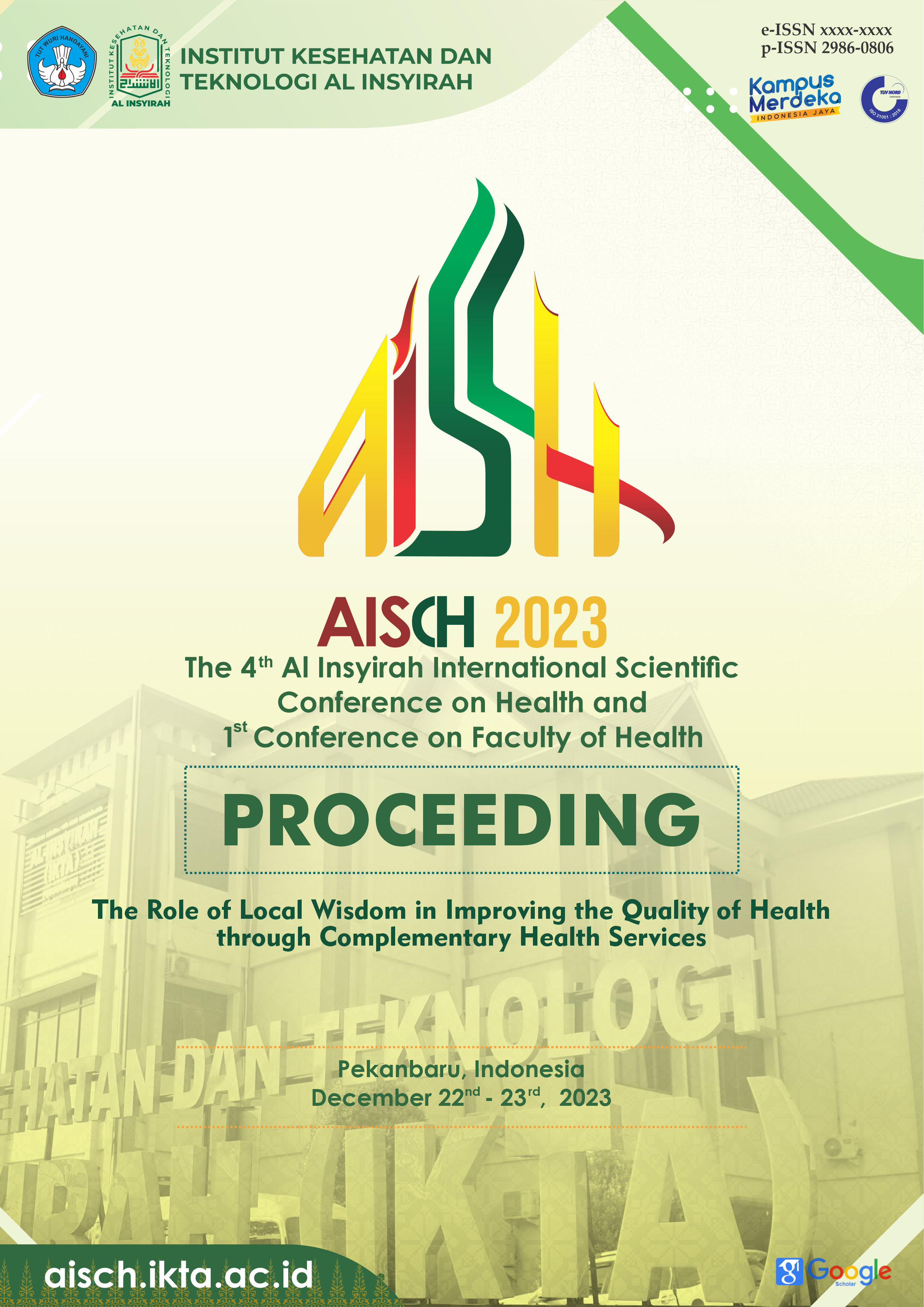RELATIONSHIP BETWEEN BREASFEEDING FREQUENCY AND BREAST MILK PRODUCTION IN BREASFEEDING MOTHERS IN THE WORKING AREA OF GAJAH MADA TEMBILAHAN HEALTH CENTER
Keywords:
Breastfeeding Frequency, Breastmilk ProductionAbstract
Breast Milk (ASI) is a emulsion fat in protein solution, lactose and organic salts that secreted by breast gland and the best for baby. In 2021 data on breastfeeding coverage in Riau Province will decrease by 39.5%. Based on the results of the preliminary survey conducted on December 2022 at the Gajah Mada Tembilahan Health Center 2018 there were 8 breastfeeding mothers 3 of them moms with breastfeeding frequency <8 times/days moms said breastmilk is less production maximum and give her baby formula milk. One of the factors that influence the formation and production of breast milk is the breastfeeding frequency. The purpose of this study to determine the relationship between the relationship breastfeeding frequency with production of breastmilk in breastfeeding mother at Gajah Mada Tembilahan. The study design Cross Sectional. The type of research used is Quantitative Analytic. and the research instrument used a questionnaire sheet. The sample in this study amounted to 32 people using the Total Sampling technique. The results of the research on the frequency of breastfeeding in the good category were 29 people (90.6%) and the production of breastfeeding smoothly was 29 people (90.6%). The results of the calculation of the Chi-Square test obtained Pvalue (0.000) < (0.05), which means there is a relationship between the frequency of breastfeeding and milk production in nursing mothers. It is hoped that breastfeeding mothers can increase the frequency of breastfeeding so that breast milk production runs smoothly, the same as the principle based on demand, namely the more often the baby breastfeeds, the more milk production will increase by breastfeeding the baby, pumping or expressing breast milk more often.
Downloads
References
T. L. F. E. Rini and S. R. Nadhiroh, “Hubungan Frekuensi Dan Lama Menyusu Dengan Perubahan Berat Badan Neonatus Di Wilayah Kerja Puskesmas Gandusari Kabupaten Trenggalek,” Media Gizi Indones., vol. 10, no. 1, pp. 38–43, 2015, [Online]. Available: https://doi.org/10.20473/mgi.v10i1.38-43.
Haryono., Ulina, S. 2014. Manfaat ASI Eklusif. Yogyakarta : Gosyen.
Khamzah, S. 2017. Segudang Keajaiban ASI yang Harus Anda Ketahui. Yogyakarta : FlashBooks
Kemenkes RI, Profil Kesehatan Indonesia 2021. 2022.
D. S. dkk Rahayu, “Profil Kesehatan Provinsi Riau,” J. Chem. Inf. Model., no. 9, pp. 1–287, 2021.
Marmi, 2017. Panduan Lengkap Manajemen Laktasi. Yogyakarta : Pustaka Pelajar.
Pollard, M. 2015. ASI Asuhan Berbasis Bukti. Jakarta : ECG
I. S. Rizky Pratiwi, Deasy Febryanty, Ade Heryana, “Health Publica Health Publica,” J. Kesehat. Masy. Indones., vol. 2, no. 1, pp. 40–51, 2021.
Downloads
Published
Issue
Section
License
Copyright (c) 2024 Al Insyirah International Scientific Conference on Health

This work is licensed under a Creative Commons Attribution 4.0 International License.


